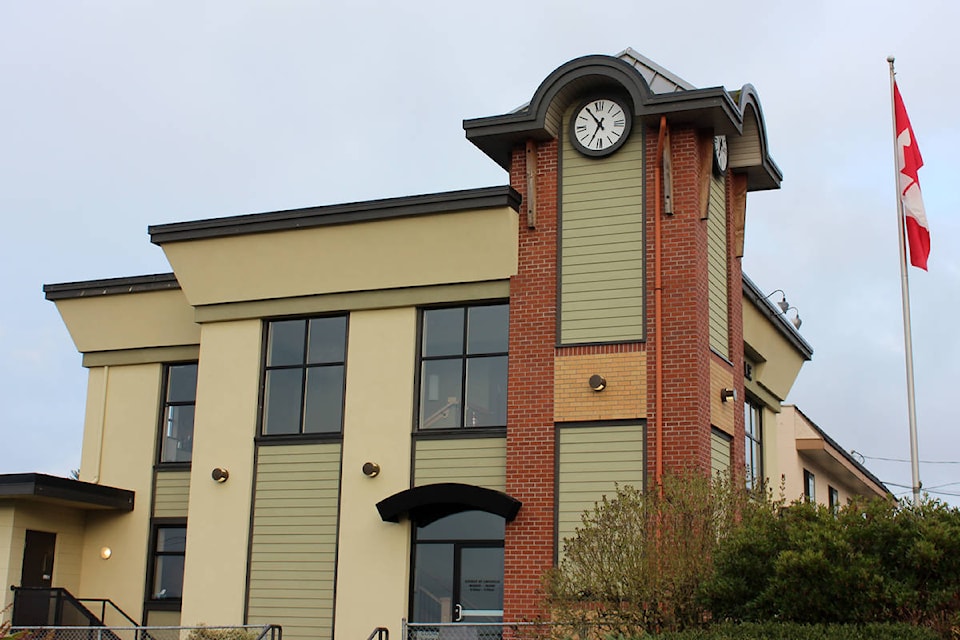The District of Lantzville generated significantly less revenue last year than staff or council anticipated.
According to Lantzville’s 2018 statement of financial information, the municipality reported $4.6 million in revenue last year, which was $3.1 million less than was budgeted in the financial plan. A significant reason for the revenue shortfall was because the district didn’t receive grants for provincial transfers, which were expected to be $3.6 million, because certain projects weren’t completed during the budget year. Instead, Lantzville only received $747,100 in transfers or grants.
The district also saw its revenue come up short in other areas. According to the report, Lantzville received $2,260 in contributions from developers and others, which was $497,740 less than expected. The report also shows that the district was expecting to receive $107,000 in development cost charges last year but only received $9,180.
However, despite coming up short in a handful of revenue categories, the district earned $480,000 “other revenue from own sources” in 2018 according to the report. Lantzville They also earned $204,00 from investment income last year, which is $143,400 more than had been budgeted.
Lantzville posted a budget surplus of $3.7 million.
“We’ve budgeted for capital projects that didn’t happen and that is why [the revenue] appears like it does,” said Jamie Slater, the district’s director of financial services. “Every single project has to have funding sources associated with it in the budget. If we think we are going to be doing a project we have to budget that funding source.”
One of those projects the district budgeted for was Phase 3 sewer expansion. Slater said the district has received a $4.4 million grant from the provincial and federal governments but cannot receive the grant until the district spends money on the project, which didn’t start last year because of right-of-way issues.
“Once we spend the money on Phase 3, you will see that revenue show up,” she said.
The nearly $500,000 shortfall in other revenue was because council didn’t move forward with an E&N Trail expansion project, according to Slater, who said the plan was to add new trail at a cost of $500,000 with money coming strictly from development. She said because the district hasn’t reached any agreements with any developers, there was never any money for the project and thus a loss in revenue had to be reported.
When it comes to the $107,000 shortfall in development cost charge revenue, Slater said that is largely because the $1.28 million Aulds Road reservoir replacement project didn’t begin last year. She said approximately $100,000 of the project is to be funded from DCCs the district has already collected but that because it is in a reserve fund and the project hasn’t started, it cannot be considered as revenue.
“Once we spend the money on that project then we can we use the DCC revenues that we have to fund that project,” she said.
Slater said the shortfalls aren’t a matter of staff underestimating expected revenue sources, but the result of accounting and auditing. She said SOFI reports are based off the very first financial plan adopted by council for the year, meaning that any changes to the budget afterward aren’t always reflected.
“They don’t let you show the budgets that are amended for things that are actually happening. If we know a project is not happening, we will amend the financial plan and take it out of there, so the numbers would look a lot different,” she said. “For audit rules, you have to show whatever financial plan was originally passed. So sometimes [the SOFI reports] can look wonky.”
RELATED: City of Nanaimo reports on council and staff wages and expenses
The SOFI report provides detailed accounting data regarding the district’s finances. It also details salaries and expenses for district employees and councillors, including those who are no longer on council.
According to the report, former councillor Bob Colclough expensed $3,441, making him the highest spending member of council last year. Colclough spent $1,206 more than former councillor Dot Neary, the second-highest spending councillor in 2018.
Former councillor John Coulson spent a mere $14, making him the lowest-spending councillor last year while former
Lantzville Mayor Colin Haime was the highest-paid council member, earning $12,364 last year. Meanwhile, current mayor Mark Swain earned $10,334. Swain, who was also a councillor last year, had $1,737 in expenses.
When it came to district employees, Lantzville spent a total of $1,050,500 on staff wages last year, an increase, according to the report.
Ronald Campbell, the district’s chief administrative officer, was the highest-paid employee, earning $126,853 last year. He spent $7,832, the most of any employee. Fred Spears, the district’s director of public works, earned $102,061.
Follow @npescod
nicholas.pescod@nanaimobulletin.com
Like us on Facebook and follow us on Twitter and Instagram
